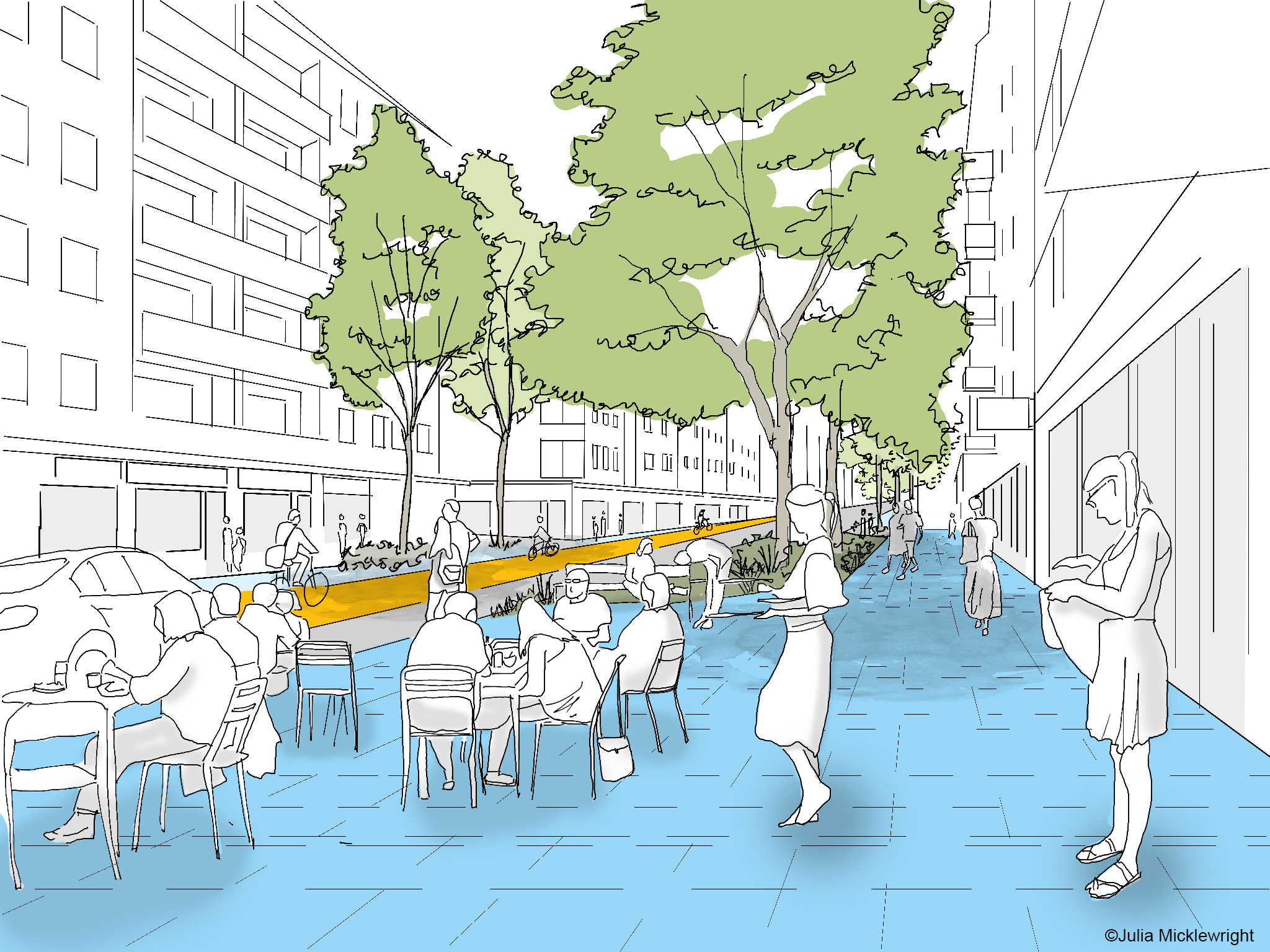Pedestrian city centres all around Europe
Town’s historical centres transformed into pedestrian-zones is a more and more common measure. I experienced the pleasure of a centre completely pedestrian in Montpellier where I lived 4 years. Walking around the medieval streets without having anything to look out for, but to just appreciate the building scenery is really a luxury. Starting in the 1980’s and developed until 2004, the whole historical centre was transformed in a pedestrian zone and this is one of the reasons why the city is ranked one of the favourite city of French citizens. Even though Montpellier is a special case as many streets are anyway too narrow for cars, these pedestrian zones become more and more spread in cities for evident reasons. They solve congestion problems, air quality, security, comfort of inhabitants and promote shopping activities. This is a trend to be seen everywhere in Europe and likewise, Munich transformed its main centre streets into a pedestrian zone in 1972 when it welcomed the Olympics. Now these streets are walked down by thousands of shoppers, particularly on weekends. What all of these projects have in common is that they focus on the city centers. Looking at Munich, there are very few pedestrian streets located in other neighbourhoods and most of them are situated just around a square. Why could pedestrian streets not bring the same benefits to other secondary centres of a district level?
A heartwarming rare example in Munich is the Weißenburger Straße which, since 1975, is a small pedestrian section leading to a Plaza full of life. There is always some interesting shop window to look at, a group sitting at a coffee terrace enhancing the phonic background, a flower kiosk creating an impressionist-like scenery, a weekly market and the buzzing activity which comes with it and so on. This street has undoubtedly a role at the neighbourhood level (which is indeed known to be one of the most expensive of Munich) but also at a larger city scale as, myself, I went there many time just to enjoy the atmosphere of a Saturday or of a Christmas market in the winter time.
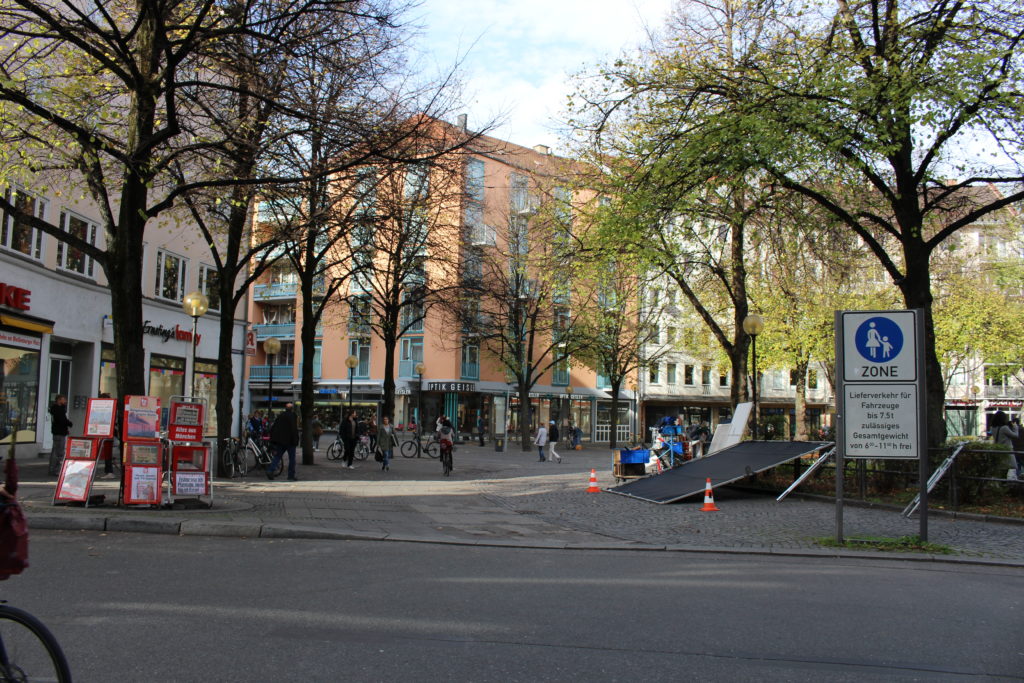
Reclaiming streets thanks to the Corona crisis
In this difficult period springs not only wonderful solidarity initiatives but also new uses of the streets which were, from one day to an other, deserted. Everyone has noticed the peace lingering in the neighborhoods as one went to the supermarket of wandered around for a bowl of fresh air. I must say I enjoyed very much racing down the streets on my roller-blades without any worries. This got me wondering: wouldn’t it be great if some streets could stay like this after the return to (almost) normality?
There are actually a few remarkable initiatives pushing in this direction. During the lockdown, an organization in Berlin called Changing Cities started a petition to create Pop-up bike lanes by closing down whole streets in order to give more space to cyclists and pedestrians as this is the prevailing mean of transport during this period. This is also supported in order to promote social distancing as people have trouble to avoid each other on crowded side walks. Berlin had already an ambitious program to develop bike lanes and may use this sudden decrease in traffic to test out a few solutions.
An other long-term ambitious program is to be developed in Milan. The town council plans to use the system of Parklets to widen pedestrian space in streets. This principle was started in San Francisco in 2005 by the artist Rebar as he transformed a street parking space into a terrace with chairs and a potted tree. This simple reclaiming of a space used usually just as storage is a great way to give more space to the pedestrians. This model in Milan would give more space to café and restaurant terraces therefore allowing customers to sit further from each other and thus promoting the business. The city announced that 35km of streets will be transformed over the summer with demonstrations of these widened sidewalk but also with wide cycle lanes and 30 km/h speed limit zones. In an interview for the Gardian, Marco Granelli, a deputy mayor of Milan, promotes the environmental benefits of such measures but also underlines an important economical justification as this will give an improved environment for small businesses which suffered greatly in this crisis.

Photo:Mit Vergnügen München
Augustenstraße, Munich, a case study of a street transformation
This street is one I cross every day as it is right behind my home. It is characterized with many shops on both sides, a few supermarkets, coffee shops and some restaurants. A great point of attraction is the Metro-Station “Theresenstraße” which is situated on the crossing with the street leading to the Technical University of Munich. This means that hundreds of student rush there in the morning and evening, but do not seem to remain in Augustenstraße more than just to make specific purchases. I can attest myself that these sidewalks get very crowded at 5pm as I must stay alert while dashing down the cycle lane in order to not run over a couple absent-mindedly walking between the sidewalk and the cycle lane. This street has definitively an influence on the neighbourghood level and is even closed off by a charming square at the very end. It also has many economical activities which could enjoy more pedestrian space. So is the development of a pedestrian street credible?
Traffic
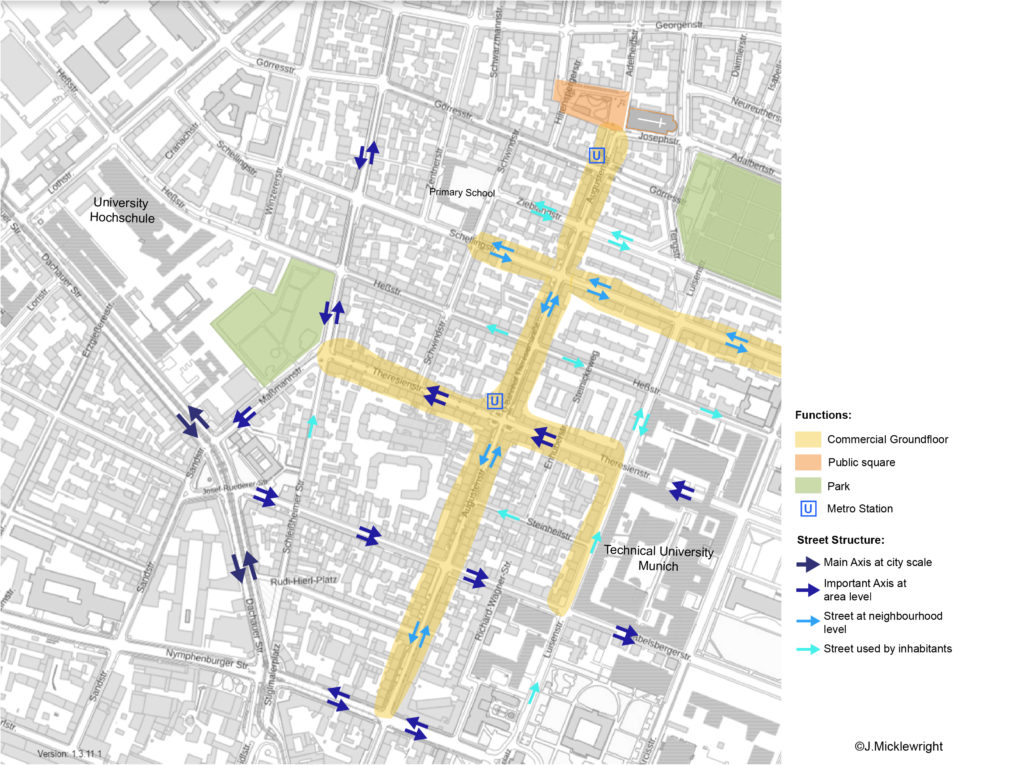
The street does not carry out a main role in the circulation network in this part of the city. The perpendicular streets help the traffic flow to the North and Schleißheimerstraße is a main connector to the East. The streets in between are more for residents use, deliveries and access to underground car parks. This is a main barrier to the transformation of our studied street into a fully pedestrian street. There are too many underground garages access to be able to close off any part. A one way street with a speed-limit of 30km/h is therefore more appropriate thus still liberating a car lane in order to let bikes cycle freely.
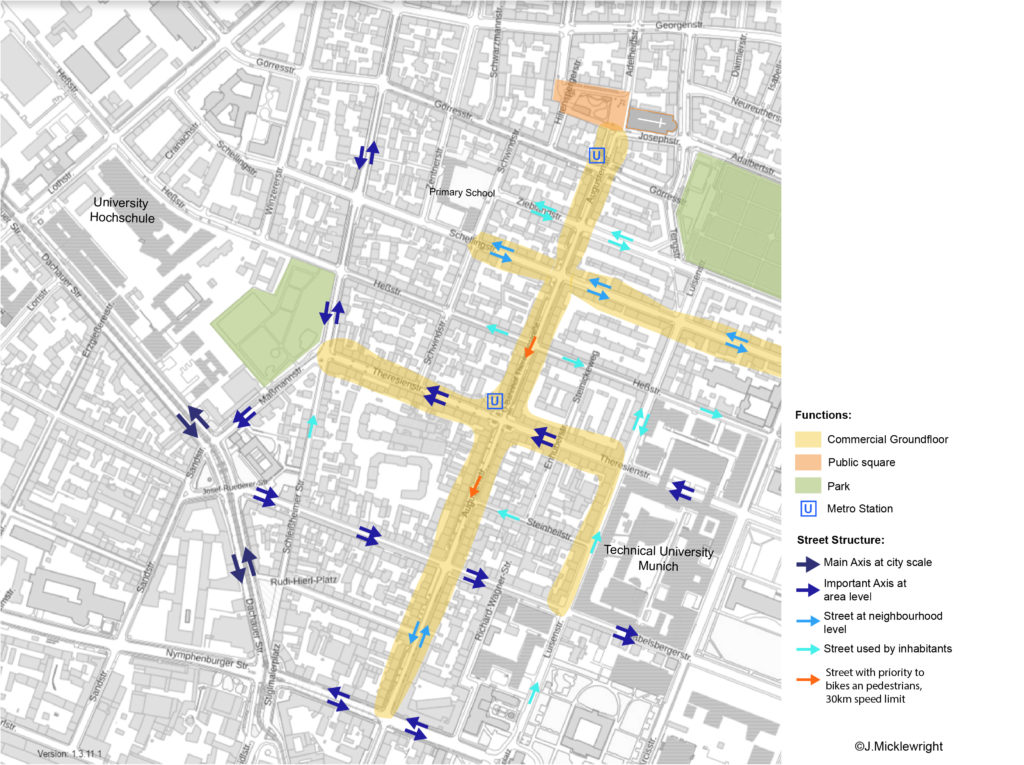
Field of view
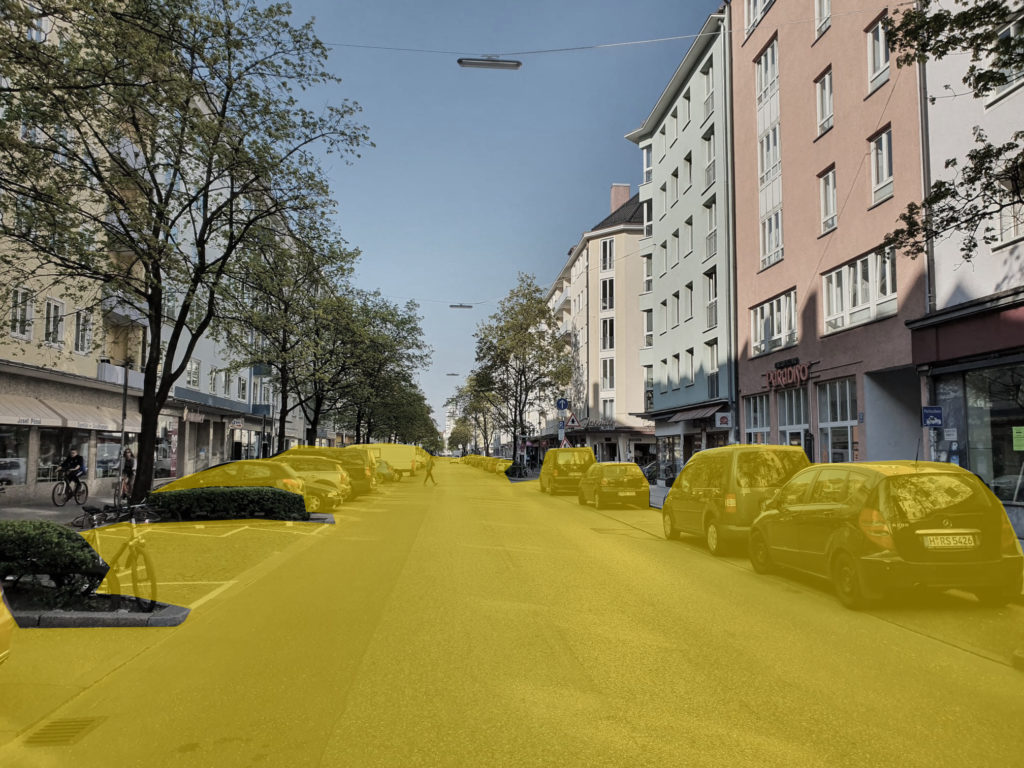
Car-dominated landscape 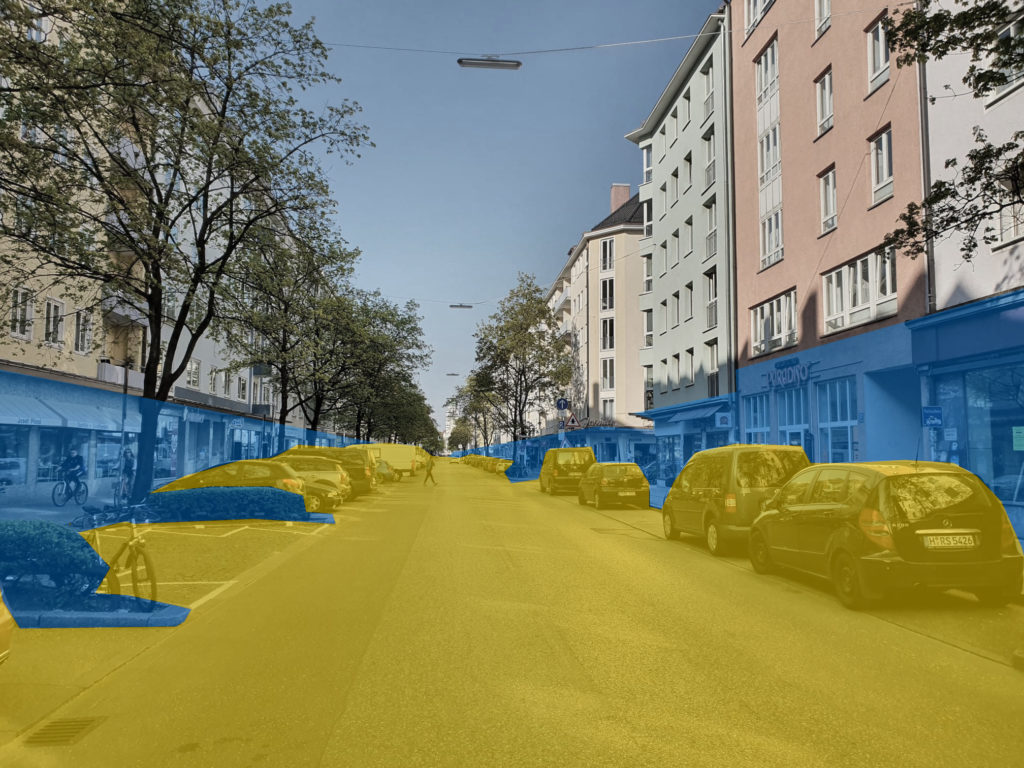
Street-life landscape
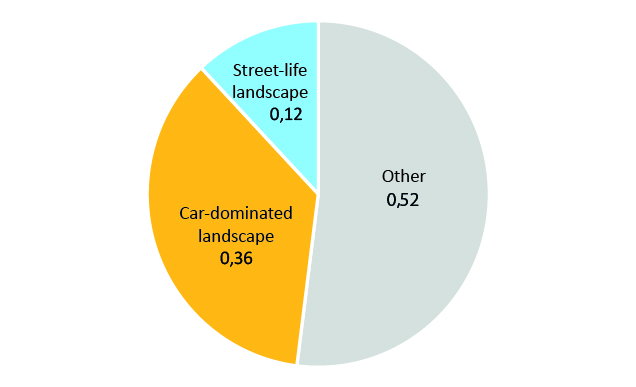
What seems necessary to allow pedestrians to walk freely and cross the remaining lane without any problem, is to open up the field of view. With cars stationary on both sides, one must slowly peak its head out to spot incoming cars. Eliminating most (if not all?) parking spots along the street would allow a new open landscape where one can anticipate the other users and linger more peacefully. Moreover these deleted parking spaces unable to widen the sidewalk and allow new terraces, public benches (not one is to be found on the street today) and vegetation grounds.
Of course the residents might be reluctant to the disappearing of those parking spots. Despite this, we should acknowledge that urban mobility must move more towards public transport and alternative means of transportation in order to limit environmental impacts. Moreover, mainly students live in this area because of the University and don’t own cars and the numerous underground car parks can still cover part of the need.
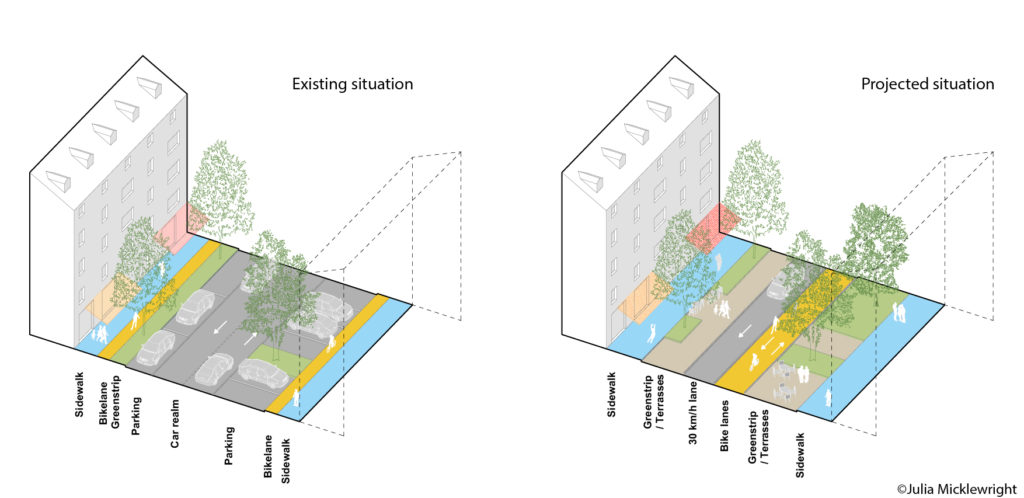
Thanks to such a conversion the street would become more pleasurable for everyday users, invite passing-by commuters to linger around, promote alternative mobilities, attract inhabitants of other parts of the city to enjoy a shopping stroll, increase the attractivity of the real estate around and ultimately support the shops in their return to activity. I am convinced, what about you?
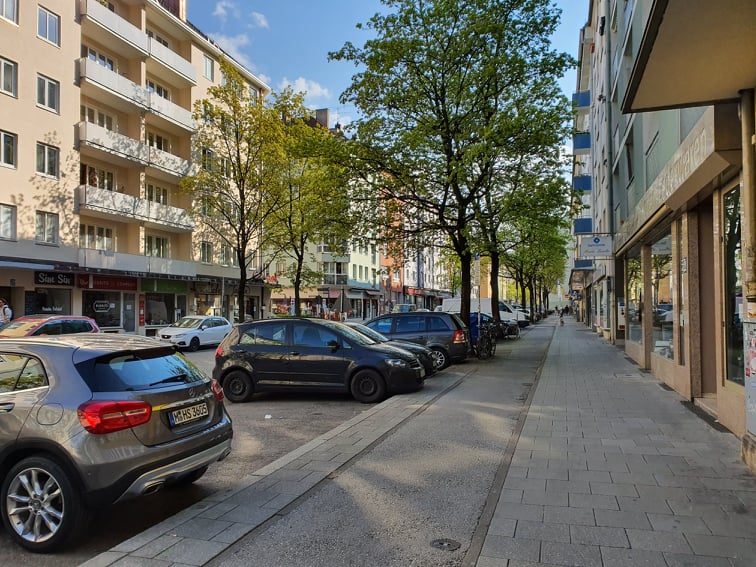
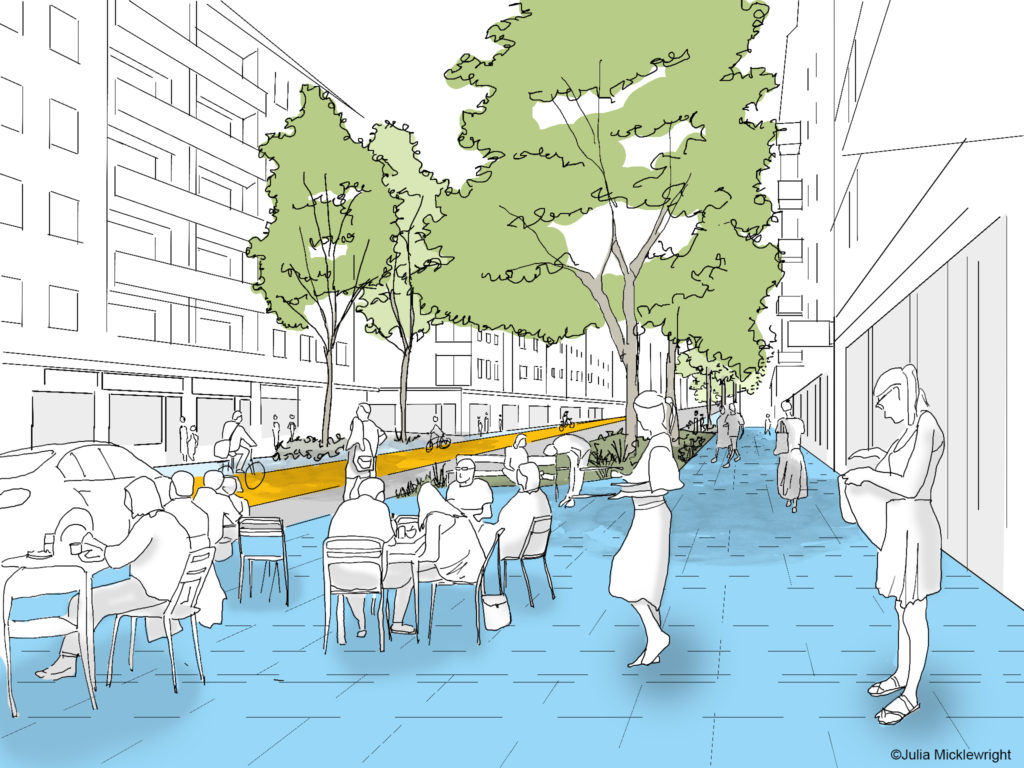
Sources
- Opportunities brought by pedestrian streets in Munich: https://www.sueddeutsche.de/muenchen/fussgaengerzonen-muenchen-vorschlaege-1.4420995-2
- Opportunities brought by pedestrian streets in France: https://reseauactionclimat.org/wp-content/uploads/2017/04/Les-Villes-_respire_-de-demain-repenser-la-mobilite%CC%81-face-a%CC%80-l%E2%80%99urgence-climatique-et-sanitaire-.pdf
- Berlin’s initiative: https://www.zeit.de/mobilitaet/2020-04/verkehr-strasse-freigabe-fussgaenger-radfahrer-platz?fbclid=IwAR3s9NYEUXVM7m5dmUegbY7EYWTJkOKkA9SCoqscyzdIvsFvR0564J7t-VQ
- https://changing-cities.org/
- Milan’s initiative: https://www.theguardian.com/world/2020/apr/21/milan-seeks-to-prevent-post-crisis-return-of-traffic-pollution •https://changing-cities.org/
- Parklets: https://gehlpeople.com/projects/parklets/
To go further: https://autrementautrement.com/2020/04/21/demain-maintenant-lespace-public/
